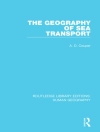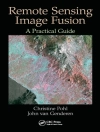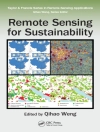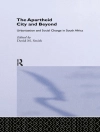This volume offers a novel study of the Milan-Cortina’s Winter Olympics 2026, with a focus on the mountainous region of Valtellina. It brings an up-to-date analysis of the complex interactions between mega-events and remote areas, both in terms of potentials for regeneration and risks for further segregation. Remote areas are traditionally characterized by socio-economic and spatial disparities. On the one hand, they benefit from attractive features, such as environmental and landscape resources, food and wine production, and energy production. On the other, they are by definition fragile environments, disrupted by the contradictions of international tourism, climate change, limited infrastructures and services, rural abandonment, and demographic decline.
This book offers credible solutions for the sustainable development of mountainous regions as a legacy of Winter Olympics. It is an essential resource for scholars, professionals, and policy-makers in the fieldsof urban planning and design, architecture design, geography, sociology, and economics.
Table of Content
Preface – Introduction – FIRST PART: ANALYSING OLYMPIC MOUNTAIN REGIONS.- 1. The characteristics and the challenges of the Olympic Valtellina mountain region.- 2. The spatial rescaling of Italian mega-events: from big projects to regional regeneration.- 3. The spatial change of Winter Oympics: The analysis of international case studies – SECOND PART: SHAPING THE TRANSITION OF THE OLYMPIC MOUNTAIN REGION.- 4. Sports as well-being practice. The diversification of tourism through the integration of sport, wellness and health.- 5. Culture as trans-scalar encounter. The increase of livebility through the integration of landscape and services.- 6. Transport solution for alternative mobility and accessibility. A sustainable and feasible approach.- 7. Governance and planning: from complexity and contradictions to multi-level and trans-border approaches – THIRD PART: LEARNINGS AND CONCLUSION. THE FUTURE CHALLENGES FOR MEGA-EVENTS IN REMOTE AREAS.- 8. Through and beyond mega-events. Scenariosand prospects from cities to mountain regions.
About the author
Andrea Arcidiacono (Ph D) is Associate Professor at the Politecnico of Milano (DASt U), where he coordinates the BSc Program in Urban Planning, and is a board member of the Ph D Program in Urban Planning, Design and Policy. He is Scientific Director of the Land Take Research Centre (CRCS) and, since 2016, Vice-President of the National Institute of Planning (INU). He is a member of the editorial board of the journal Urbanistica and authored over 150 scientific publications.
Stefano Di Vita (Ph D) is Researcher in Urban Planning at the Politecnico di Milano (DASt U). His research focuses on spatial dynamics of economic transition (including temporary events and digital innovation), planning processes, tools, and mechanisms of urban change (from big projects to micro-scale regeneration), and spatial phenomena, strategies, and actions targeted to international repositioning and regional rescaling of cities. He is a member of the editorial boardof the journal Territorio and authored over 70 scientific publications.












